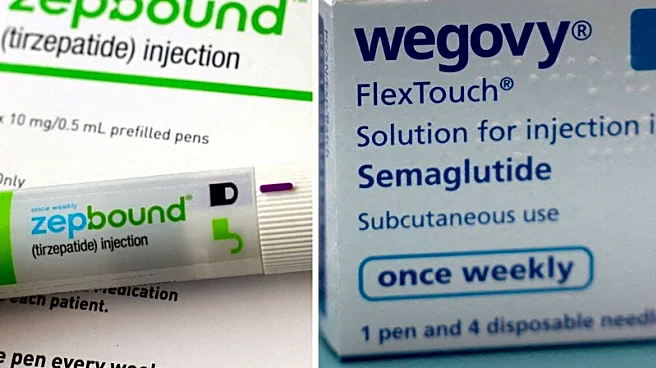What's Happening?
A recent survey by the Business Group on Health indicates that employers are preparing for a median healthcare cost increase of 9% in 2026. This follows two years of cost increases that exceeded expectations. The survey highlights several factors contributing to this trend, including the rising demand for GLP-1 medications for weight loss, which 79% of respondents noted as a significant cost driver. Additionally, cancer remains the leading cause of healthcare expenses, prompting employers to focus on prevention and screening. Mental health services are also becoming a larger cost factor, with 73% of employers reporting increased investment in mental health and substance abuse disorder services. As a result, employers are reevaluating their medical and pharmacy benefits, with many considering alternative health plans and transparent pharmacy benefit management services.
Why It's Important?
The anticipated rise in healthcare costs is significant for U.S. businesses, as it may impact their ability to offer competitive benefits to employees. Employers are under pressure to manage these costs while maintaining quality care, which could lead to changes in healthcare coverage and benefits. The focus on mental health services reflects a growing recognition of the importance of employee well-being, potentially leading to improved workplace productivity and satisfaction. However, the increased costs associated with GLP-1 medications and cancer treatments may necessitate stricter utilization management protocols, affecting employee access to these services. The shift towards alternative health plans and transparent PBMs could drive innovation in healthcare delivery, offering employees more affordable and high-quality care options.
What's Next?
Employers are likely to implement changes in their healthcare vendor lineup and program configurations to manage costs effectively. This may include introducing utilization management protocols for weight loss medications and expanding cancer care centers of excellence. As employers explore alternative health plans and transparent PBMs, employees may experience changes in their healthcare benefits, potentially leading to more affordable and higher-quality plans. The ongoing evaluation of medical and pharmacy benefits will require vendors to demonstrate their value, influencing the future landscape of employer-sponsored healthcare.












